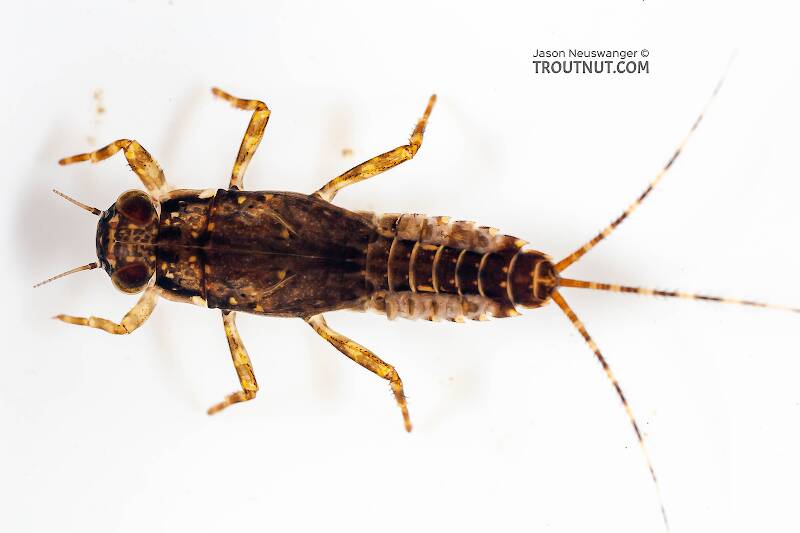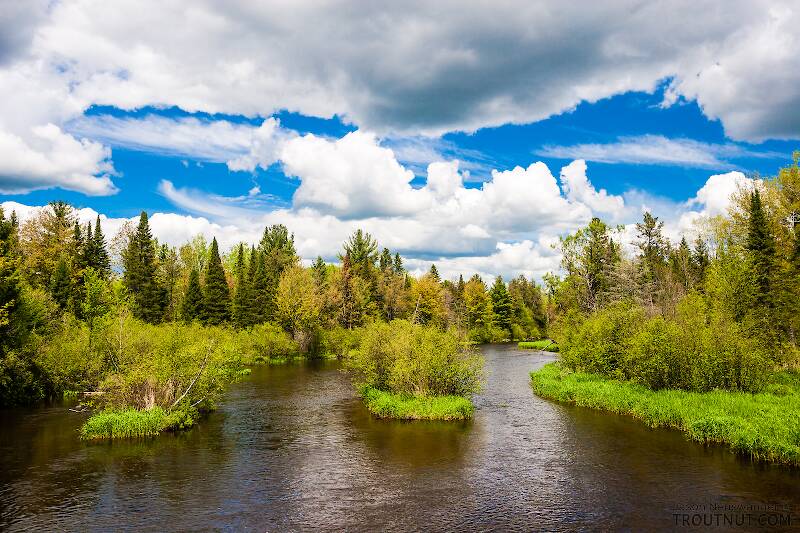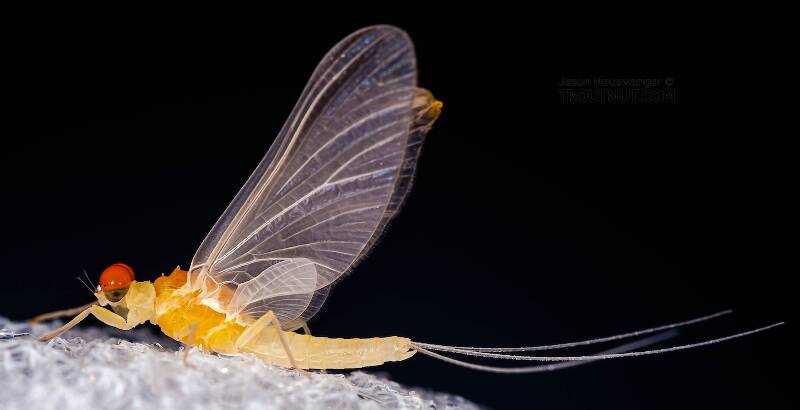
Blue-winged Olives
Baetis
Tiny Baetis mayflies are perhaps the most commonly encountered and imitated by anglers on all American trout streams due to their great abundance, widespread distribution, and trout-friendly emergence habits.
Featured on the forum

It's only barely visible in one of my pictures, but I confirmed under the microscope that this one has a prosternal horn and the antennae are mid-way between the eyes and front of the head capsule.
I'm calling this one Pycnopsyche, but it's a bit perplexing. It seems to key definitively to at least Couplet 8 of the Key to Genera of Limnephilidae Larvae. That narrows it down to three genera, and the case seems wrong for the other two. The case looks right for Pycnopsyche, and it fits one of the key characteristics: "Abdominal sternum II without chloride epithelium and abdominal segment IX with only single seta on each side of dorsal sclerite." However, the characteristic "metanotal sa1 sclerites not fused, although often contiguous" does not seem to fit well. Those sclerites sure look fused to me, although I can make out a thin groove in the touching halves in the anterior half under the microscope. Perhaps this is a regional variation.
The only species of Pycnopsyche documented in Washington state is Pycnopsyche guttifera, and the colors and markings around the head of this specimen seem to match very well a specimen of that species from Massachusetts on Bugguide. So I am placing it in that species for now.
Whatever species this is, I photographed another specimen of seemingly the same species from the same spot a couple months later.
I'm calling this one Pycnopsyche, but it's a bit perplexing. It seems to key definitively to at least Couplet 8 of the Key to Genera of Limnephilidae Larvae. That narrows it down to three genera, and the case seems wrong for the other two. The case looks right for Pycnopsyche, and it fits one of the key characteristics: "Abdominal sternum II without chloride epithelium and abdominal segment IX with only single seta on each side of dorsal sclerite." However, the characteristic "metanotal sa1 sclerites not fused, although often contiguous" does not seem to fit well. Those sclerites sure look fused to me, although I can make out a thin groove in the touching halves in the anterior half under the microscope. Perhaps this is a regional variation.
The only species of Pycnopsyche documented in Washington state is Pycnopsyche guttifera, and the colors and markings around the head of this specimen seem to match very well a specimen of that species from Massachusetts on Bugguide. So I am placing it in that species for now.
Whatever species this is, I photographed another specimen of seemingly the same species from the same spot a couple months later.

Troutnut is a project started in 2003 by salmonid ecologist Jason "Troutnut" Neuswanger to help anglers and
fly tyers unabashedly embrace the entomological side of the sport. Learn more about Troutnut or
support the project for an enhanced experience here.
Miniature Eastern Sulphurs
This common name refers to only one species. Click its scientific name to learn more.
Mayfly Species Ephemerella dorothea dorothea
These are sometimes called Miniature Eastern Sulphurs.
Ephemerella dorothea consists of two subspecies, which both produce excellent action. Ephemerella dorothea dorothea is a small species of Sulphur in the East, and Ephemerella dorothea infrequens (formerly Ephemerella infrequens) is one of the two main Pale Morning Dun hatches of the West. The remainder of this page focuses on the dorothea dorothea subspecies, and Ephemerella dorothea infrequens is discussed separately on its own page.
This is one of the most challenging mayfly hatches on Eastern waters. On many streams, it follows or overlaps hatches of the larger, lingering Ephemerella invaria.
This is one of the most challenging mayfly hatches on Eastern waters. On many streams, it follows or overlaps hatches of the larger, lingering Ephemerella invaria.

I keyed this nymph carefully under a microscope to check that it's Ephemerella dorothea.


